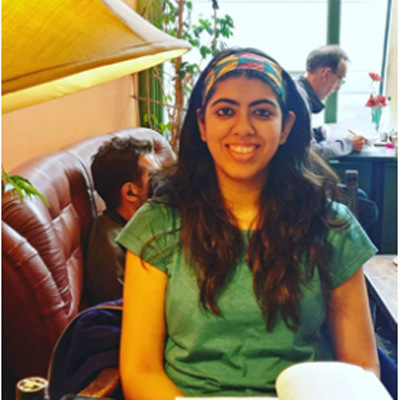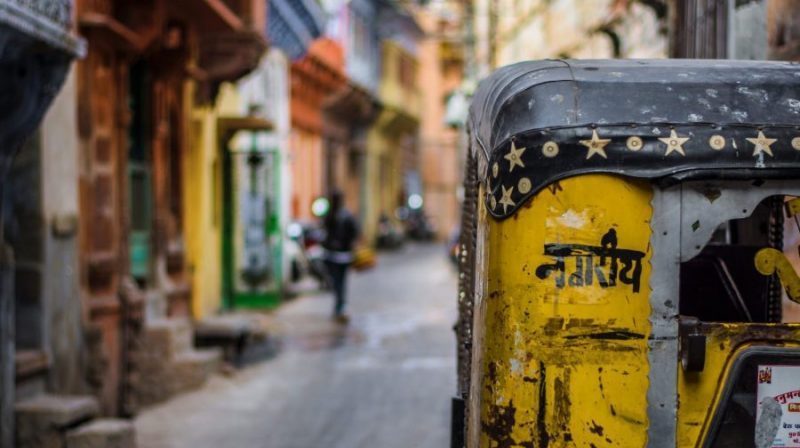With the increasing penetration of internet and smartphones in rural India the last few years, we notice a substantial increase in people’s engagement with them. As the internet makes inroads into the previously untouched parts of the country, we also witness a surge not only in consumption, but also in content creation. A consequence of which is a more diverse representation of communities across the nation, on digital platforms. Individuals across socio-economic backgrounds are actively participating and engaging with social media and thus taking away the hegemony of the metropolitan cities over such platforms. Since, the affordances of social media platforms are aiming to create more inclusive spaces, it is thus providing an opportunity for people to bring forth their narratives and lifeworlds for the larger world to peek into.
Thus, digital is allowing us to push the boundaries to display a more heterogeneous and inclusive narrative of the “real India”. One such facet of the inclusivity of social media can be seen through the surge of bloggers from the rural parts of the country showcasing the Indian rural life. This has generated significant traction, offering a new lease of life to the otherwise familiar content, breaking the monotony and gaining a surge of viewerships and followers in recent times.
Such a momentous increase in the diversity of content being shared on social media platforms, needs to not only be acknowledged but reflected upon to explore the various ways in which it is affecting the digital and physical landscape as well as reshaping it.
Deciding the stories they want to share
With the digital revolution permeating through every crevice of the country, the internet has emerged as a tool for self expression and a vector of forging powerful connections. Thus, providing individuals across the country with equal opportunities to leverage upon its power and scope. Social media platforms have transgressed beyond just sharing and consuming content and are now a source of empowerment and autonomy, enabling several voices to be heard.
As a result we are witnessing how the rural communities are no longer dependent on the urban to bring forth and highlight their stories and lived experiences. What we wish to emphasize here is how the digital provides individuals beyond the urban, the ability to take it upon themselves to showcase their indigenous culture and traditions.
Social media platforms tend to provide both independence and autonomy that is allowing bloggers in rural India with a sense of control of what is to be shared and how. Here, they have complete autonomy to not only decide the themes that are relevant and need to be documented but they also have complete authority over the narrative and medium as well. What we need to acknowledge is that the content we witness on social media represents something deeper than just entertainment.
Therefore, we see diverse representations across verticals like food, entertainment, handicrafts, farming and several others that not only provides them with a voice but also enables the viewers to immerse themselves in an alternate world that has been hidden away for several years. Thus, offering a glimpse into multiple subcultures that have existed parallely but however have been dominated by mainstream narratives.
What makes such content gain popularity is the untamed rusticity and realistic portrayal of an everyday life devoid of pretense or the need to project a certain image. The limited or no editing, homely settings and relatable props or equipment helps forge an instant connection and ushers a wave of nostalgia for many.
Providing agency to the marginalized
A direct consequence of the above theme is an obvious shift in the traditional power structures. As it becomes more commonplace for people in rural parts of the country to share their narratives through such digital platforms, we are bound to observe a subversion of the traditional forces. People living in rural parts were traditionally always dependent on those that controlled access to platforms where narratives were produced and consumed. Thus, resulting in an inherent dependency wherein they would have to wait for someone to find value in an aspect of their lifestyle to research and document.
However, social media has drastically altered such dynamics. Since, it provides access to a variety of tools to produce content allowing everyone an equal opportunity to share what they think is relevant. Thus shifting the control to people whose life was being showcased. Moreover, since the control now rests with the bloggers, they can impartially share narratives capturing their realities showing what they believe is significant and needs to be highlighted. Allowing them to showcase the kind of content they wish to showcase and impartially share narratives capturing their realities, instead of depending on urban influencers and researchers weighed down by a single myopic lens.
Further, social media is democratising both the knowledge as well as the tools that are needed to produce such narratives. For instance, there are enough tutorial videos on YouTube sharing detailed instructions on how to create content. Thus, no longer providing an advantage to those that could afford such knowledge. While conversing with several farmers who have become big content creators in India, we learnt that most of them had self-taught themselves such skills with ease of tutorial videos available for free on various social media platforms.
An insight into their lifeworld
As potential consumers of such content, this provides us an opportunity to better understand the diversity and heterogeneity that India represents. As viewers, we gain access to content in its authentic and rawest form, without being edited and moulded to align with urban conformities – a true encapsulation of ruralities through the lens of an insider to the community.
What makes this intriguing, is the ability to observe behaviors, practices and norms in an unbiased form, through the lens of the indigneous people instead of the rose tinted glasses of a city gaze. Thus, bringing forth the hidden meaning systems and associations that have been traditionally and culturally ingrained in a particular setting. For example, what in laymen eyes appear as a tree, may be layered with myriad associations like that of a center of gathering, a religious manifestation or a source of local folklore.
Moreover, it opens up a fresh perspective to the outside world, allowing them to view content through the lens of an insider. Thus, endowing them to be exposed to newer realities and pick up on subtleties that often go unnoticed and ignored when captured through an urban lens.
The local content creators are equipped with the power to offer a glimpse into their world and reveal the intricacies and mundane realities of how they would see and engage with it as a part of everyday life. Thus providing an authentic account of the regularities and peculiarities as perceived by them in its untamed form instead of allowing an outsider with limited contextual knowledge, to be the evaluator.
It’s thus important to understand these newer ways in which social media is providing an opportunity to challenge the status quo by allowing a more diverse population to put forth their narratives. Further, there is a need to acknowledge and legitimise social media as an important source of knowledge. It is no longer confined to just fulfilling our entertainment needs but has become more complex and dynamic.
ABOUT THE AUTHOR

Adishri Guha works as a Senior Research Executive at the Consumer Culture Lab in IIM Udaipur.. She seeks to leverage the power of human centered approach in understanding and excavating patterns in everyday human interactions and decoding factors shaping thought and action.

Rupali Kapoor works as the Research Officer for the Consumer Culture Lab at IIM Udaipur. She is trained in social and cultural anthropology from UCL. She is interested in decoding our everyday interactions with spaces, objects and fellow beings.
